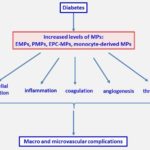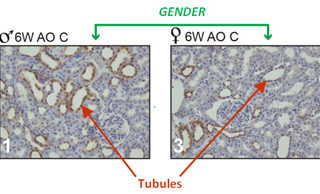Tag Archives:diabetes
Optimizing diabetes care on a global scale
Diabetes is a major threat to healthy living for hundreds of millions of people worldwide. Type-1 diabetes must be treated with insulin and type-2 diabetes (the more common form) can be treated with lifestyle changes, oral medication,
AMPK: How can we amp it up to fight disease?
Active role of cell-derived microparticles in diabetes associated cardiovascular complications
Insulin analogue with reduced weight gain effect in diabetic patients: detemir
Statins and diabetes: do the benefits outweigh the risks?
Cardiovascular disease (heart attack and stroke) is the leading cause of death in the United States. Prescription cholesterol-lowering medications have been shown to lower the risks for heart attacks and stroke. In fact, roughly 28% of Americans
Can antioxidants benefit the diabetic kidney?
New advances in the classification of diabetes beyond type 1 and 2: monogenic diabetes
A better way to measure heart disease risk for an overweight society
Low density lipoprotein (LDL) cholesterol or the “bad cholesterol” is an established measure of cardiovascular risk. LDL particles interact with the lining of the blood vessel and contribute to cholesterol loading in the arterial wall. Continued buildup
The earlier, the better and the controlled. Glucose level sensing in diabetic patients through nano biosensors
Gone are the days when there was a big pain for patients suffering from high blood glucose (blood sugar) level that early and rapid detection was a long wait & rather unpleasant. Now recently developed approaches using
A new drug target for healthful aging
Poor blood sugar control in elderly people with diabetes is associated with increased infection risk
Diabetes guidelines for doctors (such as those by NICE) suggest that they consider relaxing the blood sugar control targets for older people. This is because older people are less likely to get the long-term benefits of improved
Prox-1 and adipogenesis
Silencing a microRNA may keep the doctor away for diabetic wounds
Alternative splicing: the new frontier in diabetes research
Food and Nutrition cause liver and brain diseases with diabetes in the developing and developed world
Disguising insulin as an antibody: a Trojan horse for type 1 diabetes prevention
Alzheimer’s disease or type 2 diabetes?
Exorcising autoimmunity
The evidence for wheat bran related to obesity, diabetes and cardiovascular disease
Wheat is a leading human cereal crop. Wheat bran (WB) is a by-product of conventional milling of wheat grains and is a concentrated source of dietary fiber. Interest in WB as a source of dietary fiber and



















